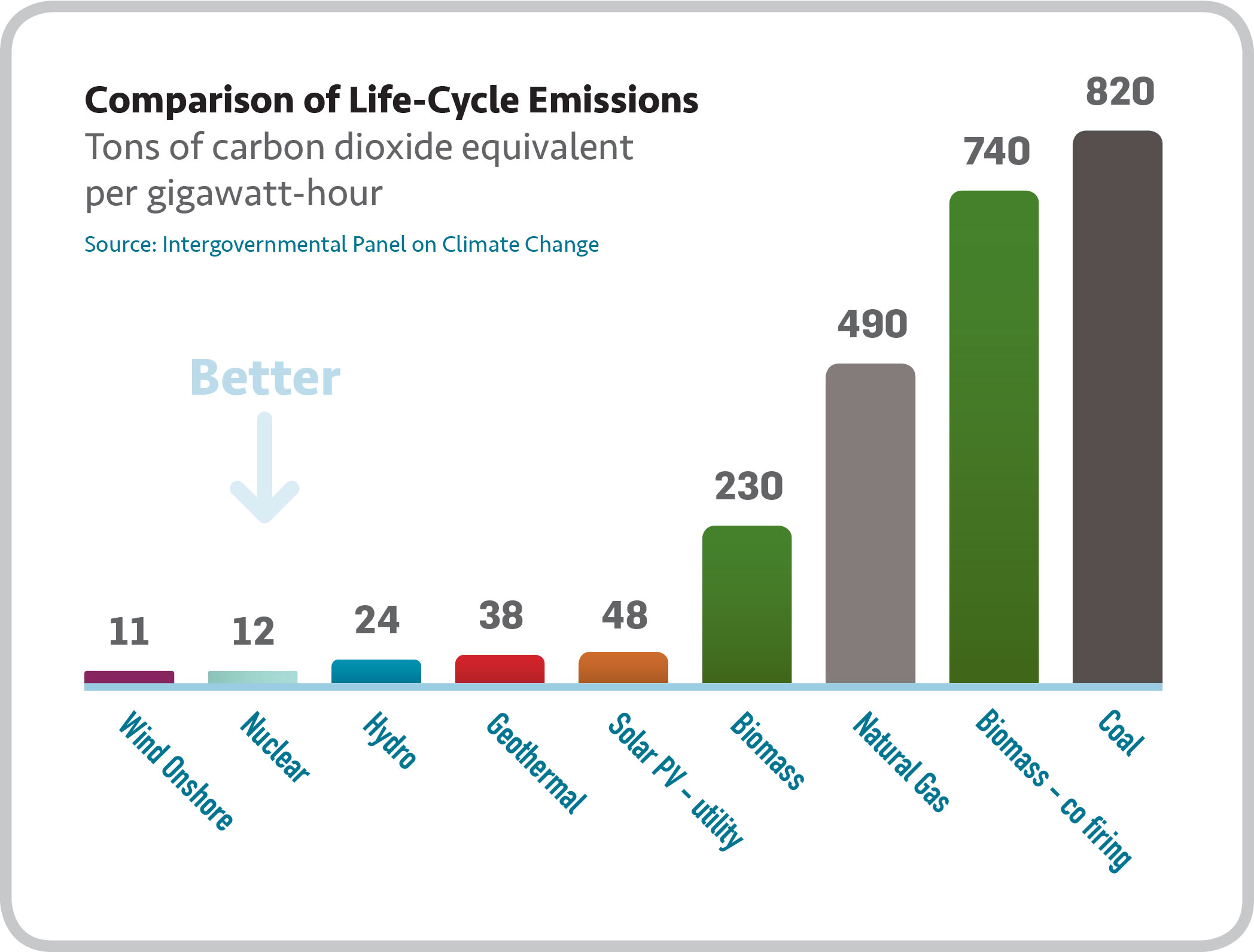Nuclear power is America's largest domestic source of clean energy. Nuclear power facilities do not release carbon dioxide or result in any other significant air pollutants.
As a result of this clean electricity generation, Columbia Generating Station annually prevents a fossil fuel replacement equivalent of about 4.4 million metric tons of carbon dioxide from entering the atmosphere. That's the same amount of carbon released by approximately 778,000 cars each year.
Carbon Footprint

Nuclear energy’s life cycle greenhouse gas emissions are comparable to renewable energy, such as wind and hydropower, and far less than coal or natural gas-fueled power plants. The mining, processing and transportation of nuclear fuel all require energy inputs, which are typically drawn from carbon-emitting energy sources. Construction of a nuclear power plant also generates carbon dioxide and other air emissions from the fabrication of steel, production of concrete, transportation of construction materials, and operation of construction equipment.
River Intake & Discharge
Nuclear power plants withdraw a considerable amount of water from adjacent water bodies for cooling purposes, but those withdrawals are typically insignificant within the context of surrounding water volume.
What can be seen in the distance on a cold day is a tall column of pure water vapor rising from Columbia Generating Station's cooling towers. The water is from the Columbia River which is used for the cooling water system.
Columbia Generating Station's recirculating cooling system withdraws approximately 20 million gallons of water from the Columbia River daily. This represents little if any impact given that 80 million gallons pass downriver through The Dalles, Oregon every minute. The nuclear plant would have to withdraw more than six times its current river intake to trigger the Environmental Protection Agency’s minimal threshold for industrial water intake regulations.
Additionally, with an average Columbia River low-flow rate of more than 23 million gallons per minute through the Hanford Reach, the two million gallons of water per day that Columbia Generating Station releases back into the river has minimal direct impact on the temperature of the receiving water. The nuclear plant’s titanium condenser components also prevent dissolved metals, which salmon are particularly sensitive to, from entering the ecosystem.
Water in the plant’s cooling system does not come into contact with water used in the reactor, so radioactive materials are not present in the plant’s effluent stream. Discharge of water from the power plant into the river is also regulated by the Clean Water Act’s National Pollutant Discharge Elimination System permit program, which establishes plant-specific effluent limitations for a variety of factors such as flow volume, temperature, pH and turbidity.